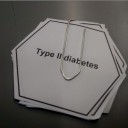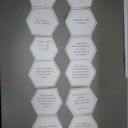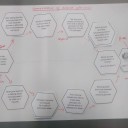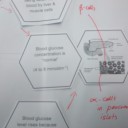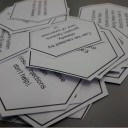Homeostasis of Glucose.
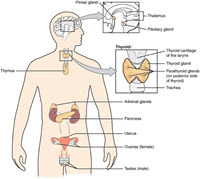 This lesson introduces the way insulin and glucagon control blood glucose levels. Students arrange SOLO hexagons to explain the homeostasis process and to build on their prior knowledge of insulin or glucose. Negative feedback is essential to the hormonal control of blood glucose and is introduced here. A second set of hexagons give a summary of the two types of diabetes and an IB style question completes the lesson.
This lesson introduces the way insulin and glucagon control blood glucose levels. Students arrange SOLO hexagons to explain the homeostasis process and to build on their prior knowledge of insulin or glucose. Negative feedback is essential to the hormonal control of blood glucose and is introduced here. A second set of hexagons give a summary of the two types of diabetes and an IB style question completes the lesson.
Lesson Description
Guiding Questions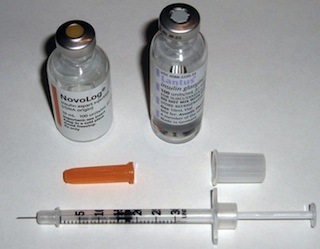
What is negative feedback?
How can blood glucose levels be maintained within tight limits?.
Activity 1 - Introduction to the hormones of glucose homeostasis
Use the short presentation ![]() Introduction to glucose control to introduce the topic.
Introduction to glucose control to introduce the topic.
Activity 2 - SOLO hexagon activity - glucose homeostasis
Cut out the hexagons on the ![]() glucose control SOLO hexagons worksheet shown below. Arrange the hexagons on a piece of A3 paper to illustrate the control of blood glucose levels in the body.
glucose control SOLO hexagons worksheet shown below. Arrange the hexagons on a piece of A3 paper to illustrate the control of blood glucose levels in the body.
Here are some examples:
Here are the hexagons:
Activity 3 - Extra SOLO hexagons - diabetes.
Once students have completed activity 2 they can incorporate these extra ![]() diabetes SOLO hexagons into their diagram, or simply arrange them in two group to make another the diagram, or a list of information about diabetes.
diabetes SOLO hexagons into their diagram, or simply arrange them in two group to make another the diagram, or a list of information about diabetes.
A very nice final activity is to ask students to answer an IB style question using the hexagons. Here is an example.
IB style question
Distinguish between type I and type II diabetes with respect to their cause, effects and treatment. (3 marks)
...........................................................................................................................................................
...........................................................................................................................................................
...........................................................................................................................................................
...........................................................................................................................................................
...........................................................................................................................................................
Teacher's notes
If find my students often know something about insulin and glucose but have usually no knowledge of the hormone glucagon. I like to begin this lesson by getting the students to explain what they know about insulin. Remind them of the different molecules important in glucose control and the functions of muscles and the liver in the process.
Activity 2 asks students to arrange the hexagons on a chart to illustrate negative feedback using the specific example of glucose control. The hexagons can be stuck on the page during the lesson to form notes, or students can write their own notes. If the students do glue the hexagons have a few spare sets for activity 3
Activity 3 can begin with a simple sorting of the hexagons into type I and type II diabetes. After this it is interesting to try to combine the two sets by asking students to explain one type of diabetes using the hexagons. It is quick and easy to see which groups of students have understood the topic using the pattern of hexagons. A walk around the room will quickly highlight any students who are lost.
The IB style question to distinguish between type I and type II diabetes is a good final activity.
Remember to explain that "distinguish" means that students must explain differences, not similarities and they should be careful to compare like with like.

 IB Docs (2) Team
IB Docs (2) Team

